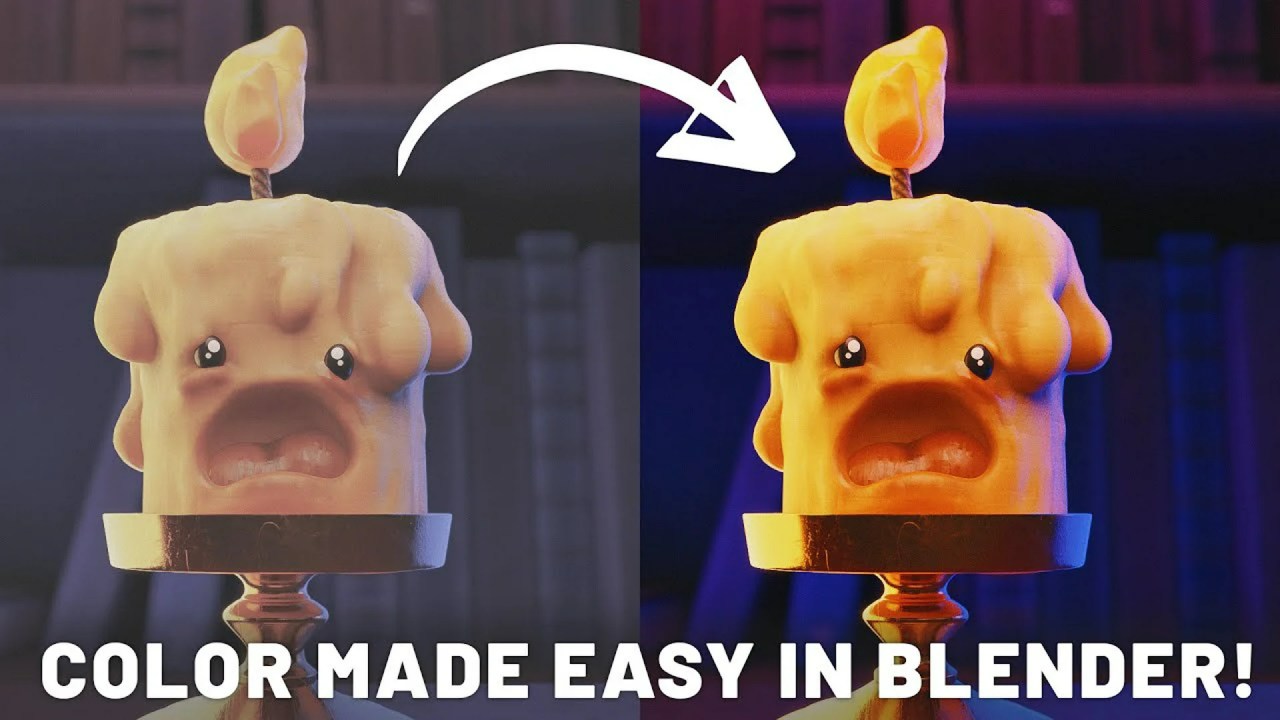Elevate your Blender renders with CineBlur, a powerful add-on that brings cinematic bokeh and film-quality depth straight into your compositor. Discover how this intuitive tool simplifies complex blur effects, offering over 30 organic lens kernels for truly professional results.
Ever gazed at Hollywood blockbusters and wondered how their visuals achieve that breathtaking, dreamy blur in the background, making subjects pop with incredible depth? That elusive, film-quality effect, known as bokeh, often feels out of reach for many 3D artists. However, what if you could infuse your Blender renders with this cinematic magic without the need for intricate setups or extensive post-production?
Enter CineBlur, an exceptional add-on for Blender developed by the talented creator, LightArchitect. This powerful tool promises to bring stunning, authentic bokeh directly into your compositor, transforming your digital scenes into something truly special. LightArchitect initially developed this node group through personal experimentation with various lens kernels, ultimately refining it into a user-friendly package now available on Superhive Market for the price of only $2.99. This makes professional-grade cinematic effects accessible to every artist.
The beauty of CineBlur lies in its simplicity and profound impact. It operates as a straightforward node group within Blender’s compositor, allowing artists to effortlessly introduce a wide array of custom bokeh shapes—or lens kernels—to their renders. This capability is a game-changer for those seeking to replicate the organic imperfections and unique character of real-world camera lenses.
What Makes CineBlur a Must-Have?
LightArchitect’s add-on distinguishes itself with several key features designed to streamline your workflow and enhance your creative output:
- 32+ Organic Lens Kernels: Forget generic circular blur. This add-on offers an extensive library of shapes, from classic hexagons and triangles to unique circular fringe and anamorphic streaks. Each kernel imparts its own distinct character, ensuring your shots possess a truly professional and artistic finish. Historically, lens manufacturers have experimented with diaphragm blade counts and shapes, leading to the diverse bokeh patterns we see today. CineBlur captures this rich history digitally.
- One-Click Import: Efficiency is paramount. After a quick installation, users can simply press Shift+A in the node compositor to instantly drop in the CineBlur node. This eliminates tedious menu navigation and complex node setups, allowing you to focus immediately on creative adjustments.
- Cinematic Control: Fine-tune every aspect of your blur. Adjust blur strength, kernel rotation, distortion, and overall style to perfectly align with your scene’s mood—whether you’re aiming for dreamy romance or high-octane action.
- Non-Destructive Workflow: Work with confidence. CineBlur integrates directly into the compositor, meaning you can experiment freely with settings and dial in your desired look without ever altering your original render file. This flexibility is invaluable for iterative design.
Embracing Imperfection for Cinematic Perfection
One of the most profound insights CineBlur champions is that the best bokeh isn’t perfectly clean. Real-world lenses introduce subtle quirks—tiny distortions, streaks, and irregular shapes—that imbue images with authenticity. The developer understands this principle deeply, crafting kernels that mimic these organic imperfections, transforming renders from digitally sterile to cinema-authentic.
These small details are what make an image believable, rich, and alive. Instead of a sterile computer-generated blur, your shots will carry the same organic vibe that audiences subconsciously associate with big-screen cinematography. It’s not merely about blurring; it’s about storytelling through glass, giving your visuals a subconscious connection to traditional filmmaking.
Getting Started with CineBlur
Installing CineBlur is a breeze. Users simply navigate to Blender’s “Edit” menu, then “Preferences,” select “Add-ons,” and click “Install from Disk.” Locate the downloaded zip file (without unzipping it), and the add-on should automatically appear and be ready to enable. Once activated, switch to the “Compositing” tab, enable “Use Nodes,” and bring in your image. Then, use Shift+A to add the CineBlur node into your workflow.
Within the CineBlur tab on the right-hand side of Blender’s interface, you gain access to the extensive library of over 30 bokeh shapes. Experiment with various circles, ovals, anamorphic streakers (some clean, some organically grungy), and even basic geometric shapes like hearts and triangles. Each selection instantly alters the bokeh’s appearance, offering unparalleled stylistic versatility.
Advanced Refinements and Artistic Control
Beyond the impressive kernel selection, CineBlur provides additional settings for granular control over your blur effects. Adjust the Blur Amount for intensity, or use Bokeh Rotation to orient your chosen shape. A standout feature is Radial Blur, which introduces a circular distortion reminiscent of classic Helios lenses, creating a creamy, swirling effect in out-of-focus areas. Should radial blur cause edge detail loss, a slight image scale-up (e.g., 5%) can easily resolve it.
Further stylize your bokeh with Distortion and Dispersion settings, which introduce imperfections and chromatic aberration. These subtle touches enhance the organic, lens-like quality, pushing your renders closer to photorealistic cinematography. While the add-on offers a comprehensive set of kernels, it’s worth noting that experienced users can also add custom lens kernels to a standard bokeh blur node manually, a technique often covered in advanced compositing tutorials.
Conclusion
CineBlur is more than just a blur tool; it is a meticulously crafted cinematic asset that empowers Blender artists to achieve professional-grade depth and character in their visuals. LightArchitect has provided a truly valuable resource for anyone looking to elevate their renders with authentic, film-quality bokeh. By embracing the subtle imperfections that define real-world optics, you can transform your digital creations into compelling visual narratives. Give your renders the cinematic touch they deserve and explore the possibilities with CineBlur.
Sources:
CineBlur Bokeh Node Add-on Demo: Blender 3d Preview!
Cineblur – Bokeh Blur Add-On



